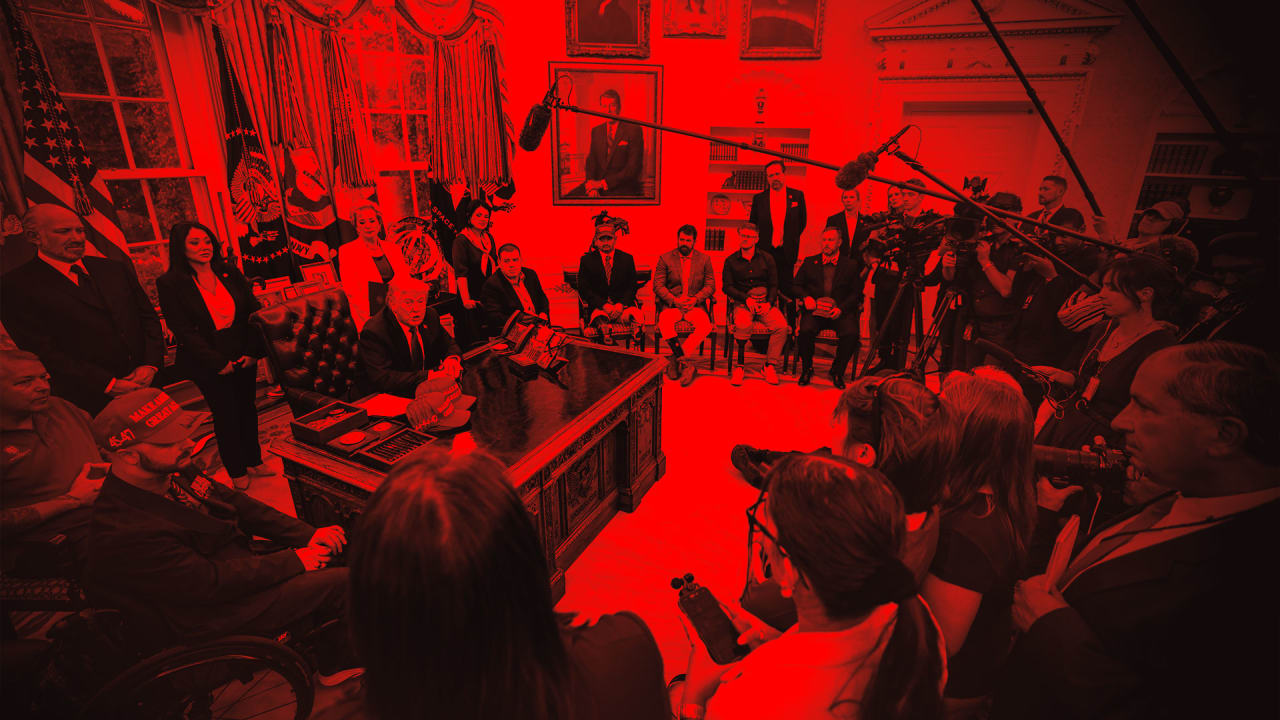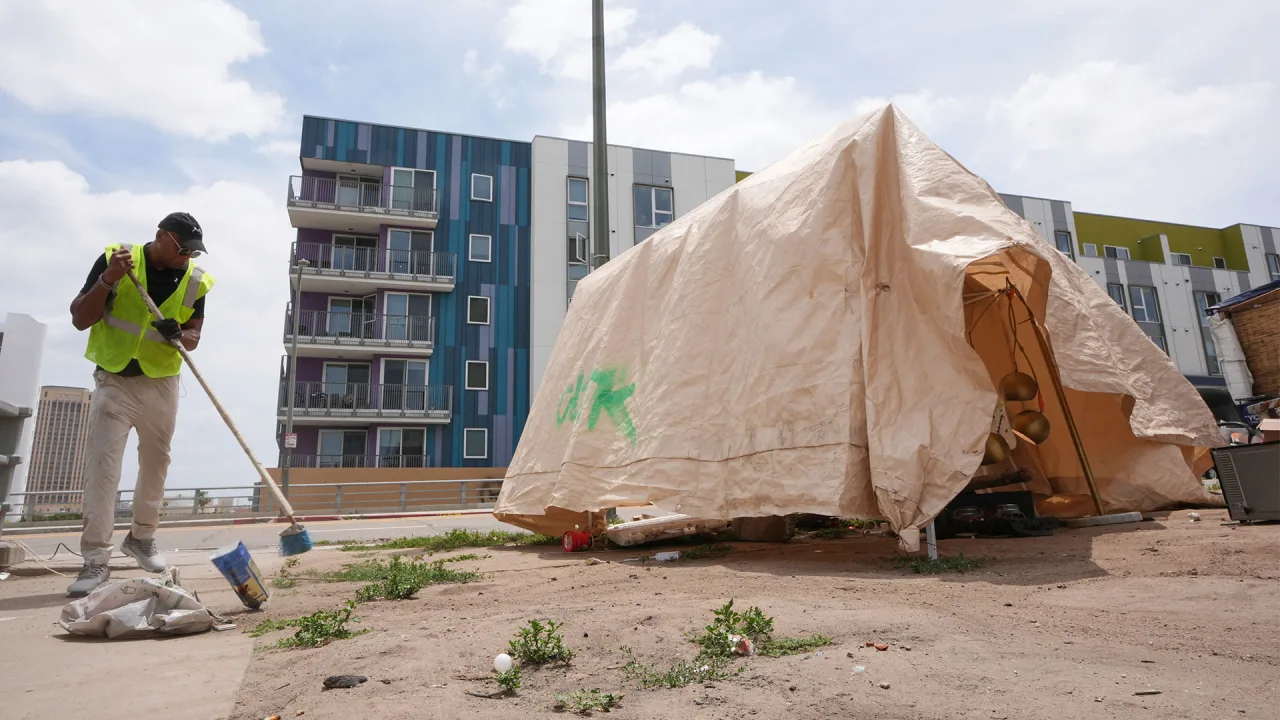Inside Target’s terrible, horrible, no good, very bad year
For its first six decades in business, Target sat on the sidelines when a new U.S. president entered office. But on January 10, ahead of Donald Trump’s return to the White House, the big-box retailer broke with tradition and donated $1 million to the Trump Inaugural Committee. Two weeks later, the corporate giant offered the new administration a different kind of gift: It announced that it was pulling back on its diversity, equity, and inclusion commitments, eliminating programs designed to increase its Black workforce and the number of Black-owned brands on its shelves. The backlash was swift. Rallied by civil rights leaders like Jamal Bryant and Al Sharpton, customers began boycotting Target’s stores. This is the same retailer, after all, that had mobilized to support the Black community in the aftermath of George Floyd’s murder, which took place 10 minutes from its headquarters. Within a year of that tragedy, the company had committed to spending $2 billion with Black-owned businesses and adding products from more than 500 Black-owned brands to its shelves by the end of 2025. Now even the web page that tracked these commitments has disappeared. Many saw Target’s abrupt capitulation to the Trump administration as a sign that it had never really believed in social justice in the first place. For months now, consumers have been registering their unhappiness by staying clear of Target. Since late January, weekly foot traffic across Target’s fleet of nearly 2,000 stores has been down between 3.8% and 7.7% compared to last year, according to Placer.ai, which tracks people’s locations based on their mobile data. Target’s stock has plunged around 40% over the past year. The company is also facing the consequences of Trump’s trade war. Even a 30% tariff on China means that the 30% of products from Target-owned brands that are still produced in that country will be much more expensive. And then there are the innumerable goods from other brands—and other countries—impacted by Trump’s so-called reciprocal tariffs. There’s no question that Target is dealing with a barrage of setbacks this year, but the retailer’s troubles date back even further. (Target turned down Fast Company’s request for an interview, but responded to questions via email.) After explosive sales growth in 2021 and 2022, the company has been flatlining: Net sales dropped $1.7 billion, or 1.6%, in 2023. Last year, they declined as well, though comparative year-to-year sales were up about 1% (2023 was a 53-week year). Target was projecting 1% growth for this year—before the tariffs were announced. Meanwhile, CEO Brian Cornell’s 2024 pay, which is tied to the company’s performance, dropped to $9.9 million—a 45% decline from the previous year. It wasn’t so long ago that Target had a reputation for providing a delightful shopping experience, with tidy, brightly lit stores and shelves stocked with well-designed products at affordable prices. Under Cornell, who became chief executive in 2014, the company built up a portfolio of more than 45 private-label brands, which are now worth more than $31 billion in annual sales. The retailer also became the exclusive launch partner to dozens of pioneering direct-to-consumer brands, helping to cultivate the retailer’s “Tarzhay” mystique. But that charm has been fading due to a series of missteps that the company made coming out of the pandemic. For one, it overestimated demand and bought too much inventory, which weighed on profits. (The company’s operating income dropped by more than 50% in 2022. And though it’s recovered ground in recent years, operating income was still down 38% last year from its 2021 high.) As the company wrestled with this excess inventory, the store experience seem to degrade: Customers started complaining about messy, disorganized aisles and long checkout lines. More recently, Target’s reliance on selling discretionary products, which make up 50% of its business and most of its owned brands, has held it back at a time when consumers are feeling the pinch of inflation. Target remains one of the biggest legacy brands on the American retail landscape, generating $106.6 billion in revenue last year. The question now is whether it can pull itself back from the brink, or whether its best days are over. [Photo: Smith Collection/Gado/Getty Images] How Shopping at Target Stopped Being Fun The weekend before Easter, Target dropped a limited-edition collaboration with Kate Spade. Collabs like these were once highly anticipated affairs that drove shoppers into stores. A decade ago, shoppers mobbed stores to get their hands on items from Target’s Lilly Pulitzer and Missoni collections. But on the morning of the Kate Spade drop, only a handful of women showed up at my large store in the Boston suburbs. When the doors opened at 7 a.m., customers found employees still unpacking Kate Spade merchandise from cardboard boxes and putting it on shelves. Fifteen minutes later,
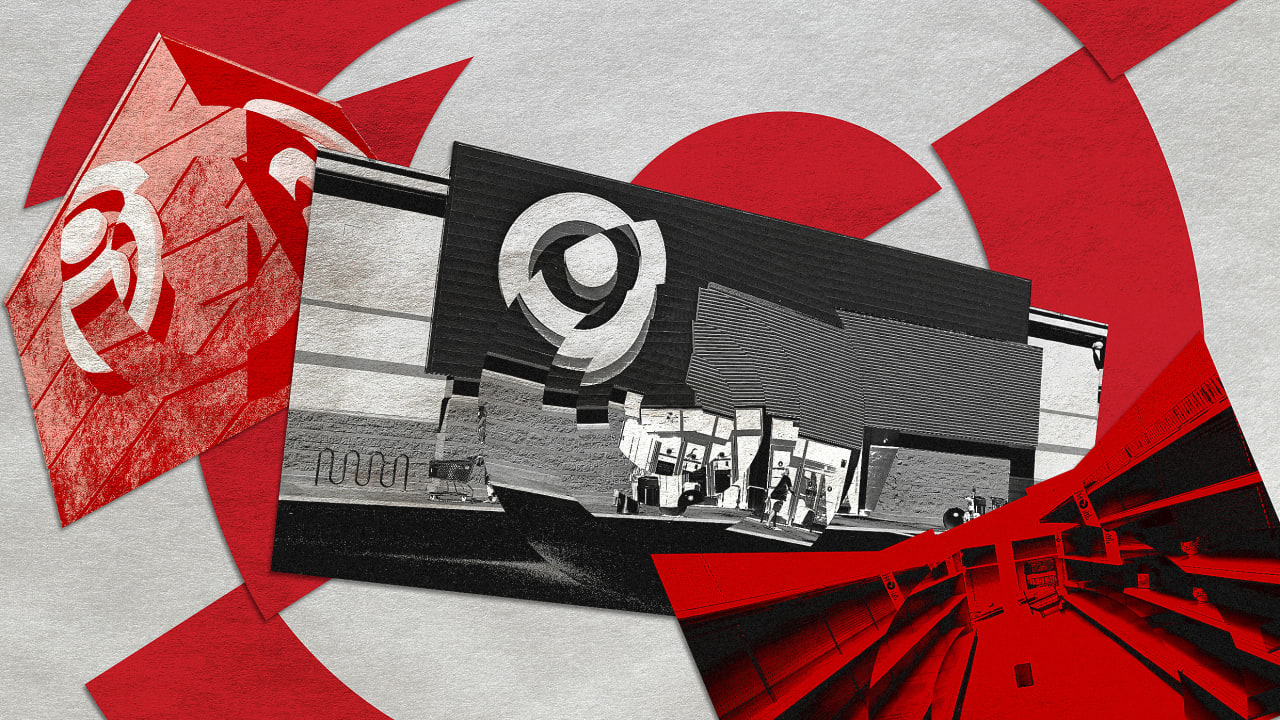
For its first six decades in business, Target sat on the sidelines when a new U.S. president entered office. But on January 10, ahead of Donald Trump’s return to the White House, the big-box retailer broke with tradition and donated $1 million to the Trump Inaugural Committee. Two weeks later, the corporate giant offered the new administration a different kind of gift: It announced that it was pulling back on its diversity, equity, and inclusion commitments, eliminating programs designed to increase its Black workforce and the number of Black-owned brands on its shelves.
The backlash was swift. Rallied by civil rights leaders like Jamal Bryant and Al Sharpton, customers began boycotting Target’s stores. This is the same retailer, after all, that had mobilized to support the Black community in the aftermath of George Floyd’s murder, which took place 10 minutes from its headquarters. Within a year of that tragedy, the company had committed to spending $2 billion with Black-owned businesses and adding products from more than 500 Black-owned brands to its shelves by the end of 2025. Now even the web page that tracked these commitments has disappeared.
Many saw Target’s abrupt capitulation to the Trump administration as a sign that it had never really believed in social justice in the first place. For months now, consumers have been registering their unhappiness by staying clear of Target. Since late January, weekly foot traffic across Target’s fleet of nearly 2,000 stores has been down between 3.8% and 7.7% compared to last year, according to Placer.ai, which tracks people’s locations based on their mobile data. Target’s stock has plunged around 40% over the past year.
The company is also facing the consequences of Trump’s trade war. Even a 30% tariff on China means that the 30% of products from Target-owned brands that are still produced in that country will be much more expensive. And then there are the innumerable goods from other brands—and other countries—impacted by Trump’s so-called reciprocal tariffs.
There’s no question that Target is dealing with a barrage of setbacks this year, but the retailer’s troubles date back even further. (Target turned down Fast Company’s request for an interview, but responded to questions via email.) After explosive sales growth in 2021 and 2022, the company has been flatlining: Net sales dropped $1.7 billion, or 1.6%, in 2023. Last year, they declined as well, though comparative year-to-year sales were up about 1% (2023 was a 53-week year). Target was projecting 1% growth for this year—before the tariffs were announced. Meanwhile, CEO Brian Cornell’s 2024 pay, which is tied to the company’s performance, dropped to $9.9 million—a 45% decline from the previous year.
It wasn’t so long ago that Target had a reputation for providing a delightful shopping experience, with tidy, brightly lit stores and shelves stocked with well-designed products at affordable prices. Under Cornell, who became chief executive in 2014, the company built up a portfolio of more than 45 private-label brands, which are now worth more than $31 billion in annual sales. The retailer also became the exclusive launch partner to dozens of pioneering direct-to-consumer brands, helping to cultivate the retailer’s “Tarzhay” mystique.
But that charm has been fading due to a series of missteps that the company made coming out of the pandemic. For one, it overestimated demand and bought too much inventory, which weighed on profits. (The company’s operating income dropped by more than 50% in 2022. And though it’s recovered ground in recent years, operating income was still down 38% last year from its 2021 high.) As the company wrestled with this excess inventory, the store experience seem to degrade: Customers started complaining about messy, disorganized aisles and long checkout lines. More recently, Target’s reliance on selling discretionary products, which make up 50% of its business and most of its owned brands, has held it back at a time when consumers are feeling the pinch of inflation.
Target remains one of the biggest legacy brands on the American retail landscape, generating $106.6 billion in revenue last year. The question now is whether it can pull itself back from the brink, or whether its best days are over.

How Shopping at Target Stopped Being Fun
The weekend before Easter, Target dropped a limited-edition collaboration with Kate Spade. Collabs like these were once highly anticipated affairs that drove shoppers into stores. A decade ago, shoppers mobbed stores to get their hands on items from Target’s Lilly Pulitzer and Missoni collections. But on the morning of the Kate Spade drop, only a handful of women showed up at my large store in the Boston suburbs.
When the doors opened at 7 a.m., customers found employees still unpacking Kate Spade merchandise from cardboard boxes and putting it on shelves. Fifteen minutes later, as shoppers got impatient, a manager said they could just go through the boxes themselves to fish for the bracelets and purses they had come to buy—giving the whole experience more of a bargain-basement vibe than a partnership with a beloved, high-end designer. The problems continued from there. While the store has a dozen changing rooms, only one was unlocked. Customers tried to find an employee to open up the other stalls, but nobody was available. Some shoppers just gave up on their quest, abandoning piles of clothes on the floor.
Target says the Kate Spade collab resulted in the company’s largest launch day for a limited-time collection in the past decade. Even so, Placer.ai’s data shows that there was a 4.7% drop in foot traffic at Target stores compared to the previous year during the week of the collection’s launch.
Shopping experiences like mine seem to have become increasingly common at Target, according to our own reporting and reporting from The Wall Street Journal and Vox. “The stores are disorganized, product is never where it’s supposed to be, and I’ve seen expired product on shelves—which is the worst thing you can do as a retailer—and there’s no one you can even complain to,” says Sucharita Kodali, principal analyst at Forrester, who specializes in retail. “These are serious executional problems.”
This decline of the in-store experience didn’t happen overnight. For years, Target stood out from low-cost competitors like Walmart and Costco by offering a more pleasant shopping experience than their warehouse-like, no-frills ambience. But things began to devolve in the wake of the pandemic.
During the COVID-19 lockdowns, many retailers saw an enormous boost in online sales as consumers used their stimulus checks to shop. Target’s sales exploded by $15 billion, or 20%, in 2020 as it sold customers garden furniture and decor for their home upgrades, and sweatpants for their homebound lifestyle. But consumers’ shopping behavior shifted quickly when society opened back up, a change that caught Target by surprise, according to Mickey Chadha, a retail analyst and vice president at Moody’s.
To head off supply chain issues during the pandemic, Target had placed advance orders for products that people would want while stuck at home. But when lockdowns were lifted, “suddenly it had a lot of inventory that it couldn’t sell,” Chadha says. “It would take them a long time to recover from that decline in profitability.”
Soon after, customers started voicing concerns about messy shelves and long checkout lines. A year ago, Fast Company spoke with Target customers and employees who complained the retailer was understaffing stores. A student at Illinois Wesleyan University wrote an op-ed in her college paper describing how she has found empty shelves and trash on the floors of her local store, and urging college students to take their business elsewhere. Redditors vented that Target’s grocery and bakery sections were out of stock, and inventory was often misplaced.
Target also put many products behind plexiglass in 2023 in response to a wave of organized retail theft. “Target’s strategy used to be to wow customers with their assortment of exciting, higher-end items in store,” says Nicole DeHoratius, professor of professional practice at Columbia Business School who studies retail operations and supply chains. “But if you can’t touch and feel the products, or even read the packaging, why would you even go to the store?”
DeHoratius points out that a poor in-store experience is likely to drive customers to shop online. But this presents another problem for Target since its e-commerce operations are still just a fraction the size of Amazon’s and Walmart’s.
For several years Target has invested $3 billion to $5 billion annually to speed up its online deliveries. It’s also partnered with Shopify to bring more brands into Target Plus, its third-party marketplace. These efforts have been working: Target’s digital sales now make up nearly 20% of its overall business, generating $20 billion in revenue.
But Walmart’s e-commerce sales, which reached $100 billion in 2024, are growing roughly twice as fast as Target’s. And Walmart continues to invest in its delivery infrastructure. In February, it announced that it was offering same-day delivery service to 93% of U.S. households (Target reaches 75% through its delivery service, Shipt). Walmart followed up with news in April that it has redesigned its approach to shipping and could now serve an additional 12 million households.
“Walmart’s online shopping experience is more sophisticated,” says DeHoratius. “If a Walmart customer doesn’t shop in store, [it] can capture that sale online, but Target is unable to do that.”
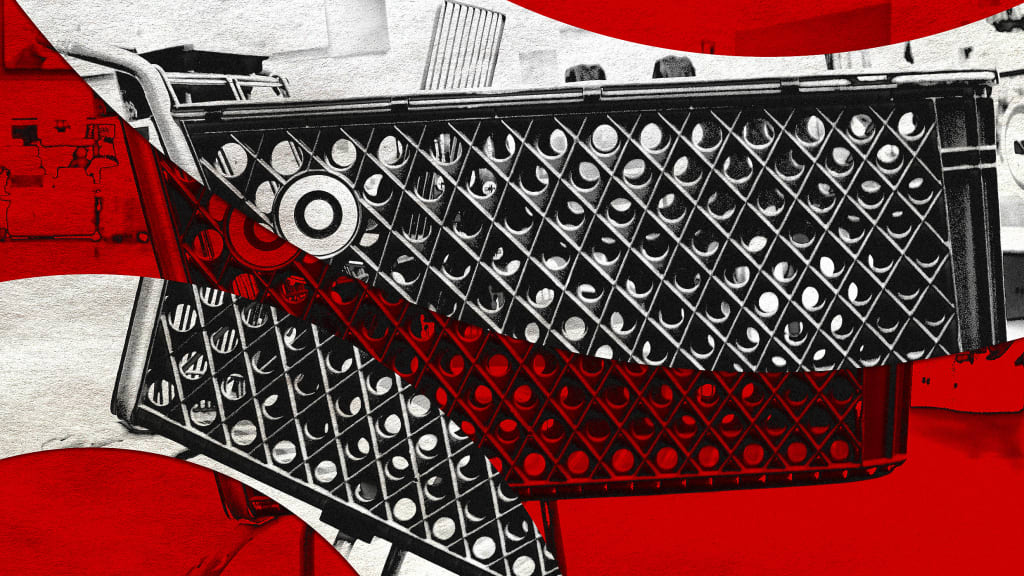
Choosing essential groceries over affordable luxuries
Target is working through its operational issues. A year ago, in an acknowledgment of customer frustrations with the slow checkout process, Target said it would open more checkout lines and launch express self-checkout with limits of 10 or fewer items. But a bigger issue for the company is that its unique value proposition—of offering better-designed products at good prices—may no longer resonate with American consumers.
The Kate Spade collaboration was part of Target’s 25-year-long strategy of partnering with high-end designers, from architect Michael Graves to fashion designer Proenza Schouler, to create more accessible versions of their products. Target has also invested heavily in its more than 45 in-house brands across the fashion, home, and beauty categories. Many of these lines closely mimic the aesthetic of other popular brands. (Auden underwear is a cheaper alternative to ThirdLove; Open Story luggage is similar to Away’s minimalist suitcases.)
“Target’s cachet was that they offered good products at a decent price,” says Chadha, the VP at Moody’s. “Their private-label strategy was very successful because you could only get those products at Target, and their margins were very high.”
Target’s appeal to middle-class consumers was that they could visit a store to buy essentials like toilet paper and dish soap while also browsing for affordable luxuries. This led to the “Target effect” of stopping at the store to buy a few basics, and leaving with $100 worth of products you didn’t know you needed. But over the past four years, consumers have consistently felt worried about the economy. And in this environment, they are less eager to spend on discretionary purchases.
This gives Walmart yet another advantage. For one thing, Walmart’s entire brand centers on offering low prices. (Since 2007, Walmart’s motto has been “Save money. Live better.”) Walmart is also continuing to expand its grocery offerings, which now make up roughly 65% of the store, and is currently building five new high-tech distribution centers for perishable products.
“In an inflationary time, consumers shift from discretionary to nondiscretionary products, which basically means food and essentials,” says Chadha. “Walmart has gained market share because of its food offerings. But it has also improved its own in-house brands, which means customers pick up a few other things on their grocery run.”
Target’s competitors are, indeed, finding more success with their in-house brands. Costco’s Kirkland brand now generates more revenue than Nike, and Walmart’s new private-label grocery brand, Bettergoods, is one of the country’s fastest-growing. (Target’s ultra-cheap Dealworthy brand, launched last year to compete with Amazon and Costco, is also growing quickly.)
Though grocery currently makes up 23% of Target’s selection, the company is starting to move that needle. Target generated $23.8 billion from food and beverage in 2024, up $9 billion from five years ago. To keep up with this growing demand, it’s opened three new food distribution centers over the past two years, bringing its total to eight. It’s opening yet another in 2026.
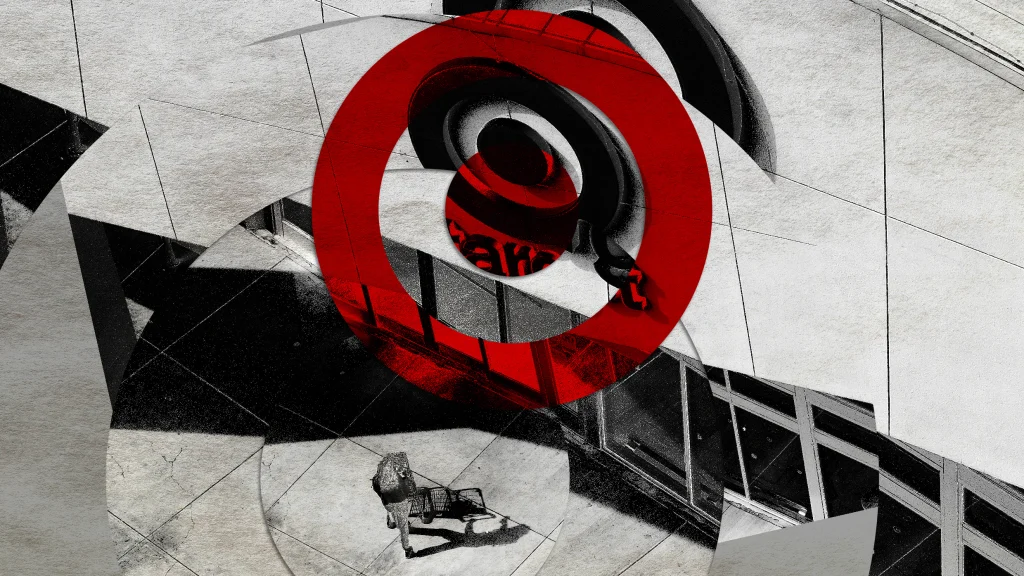
Then Came the Boycott
Target was already on shaky ground as 2025 dawned. And then Trump took office. For years, Target had positioned itself as a progressive company, supporting Pride month with rainbow merchandise and running commercials celebrating “Black joy” for Black History Month. Chadha points out that Target’s social justice stance made sense because it generally aligned with the company’s customer demographics. Walmart tends to have very large-footprint stores in rural locations that are more right-leaning; Target, conversely, tends to have smaller stores in more left-leaning urban areas. “Geography matters,” says Chadha. “Target’s stores are in places that generally skew blue.”
Target took a particularly bold stance in support of the Black Lives Matter movement in 2020. In addition to its commitment to buy inventory from Black-owned businesses, Target vowed to increase its Black workforce by 20% over three years, to donate $100 million to support Black-led nonprofits, and to offer scholarships to students at historically Black colleges and universities (HBCUs).
The directive came from the top. In an interview with the Economic Club of Chicago a year after George Floyd’s murder, Cornell said the killing had compelled him to rethink his leadership at Target. “I recognize that it’s time to take it to another level, and that as CEOs, we have to be the company’s head of diversity and inclusion,” he said.
But when Trump took office in January of this year, his administration took aim at DEI, saying it would draw up a list of private companies that could be investigated for “illegal DEI discrimination.” Target abruptly announced it was pulling back on all of its DEI initiatives.
Target was far from alone in capitulating: Dozens of companies, including Amazon, PepsiCo, and Walmart, quickly eliminated DEI programs. But Target’s reversal was more painful, says Jamal Bryant, the Atlanta-based pastor who helped kick-start the Target boycott. To Bryant, it revealed how superficial and performative Target’s promises to the Black community had been. “We’ve never asked Target for a handout; we were looking for a handshake,” he says. “And for Target to withdraw that hand so suddenly was disappointing.”
On February 2, Bryant used his pulpit at New Birth Missionary Baptist Church in Stonecrest, Georgia, to urge people to “fast” from shopping at Target during Lent, the 40-day period before Easter. He wasn’t sure whether the boycott would have any impact. But according to Placer.ai, foot traffic to Target across all stores has been down by at least 4% every week of the boycott compared to last year. Meanwhile, Costco and Walmart were seeing increases in foot traffic. “I was shocked,” Bryant says. “You have to understand, this is the largest boycott by Black people since the Montgomery Bus boycott.”
For weeks, Target didn’t acknowledge the boycott. But days before Easter, Cornell sat down with Bryant and Reverand Al Sharpton, who had also supported the boycott. The civil rights leaders asked Target to restore its internal DEI efforts, deposit $250 million into Black-owned banks, establish new partnerships with HBCUs, and renew its commitment to invest $2 billion in Black-owned businesses. Cornell committed only to the last issue, so Bryant says the boycott is still on. (The week of April 28, Target’s foot traffic was down 5% compared to last year, according to Placer.ai.)
The question is whether there’s any way for Target to bounce back from these many intersecting crises. The analysts I spoke with believe there is still time for Target to turn things around. For one thing, Target is a very big company; it has the resources to invest in fixing its operational problems and making inroads with the communities it has alienated. It wouldn’t be the first big retailer to rebound. Just a decade ago, Walmart’s stock plunged amid worries that it couldn’t keep pace with Amazon. But Walmart managed to beef up its e-commerce operations and is in a much stronger position today.
Kodali, the analyst at Forrester, acknowledges that Target is at a low point, but she believes it can recover. “Retail is cyclical,” she says. “Target has lost its mojo, but it is not irreparably damaged. It needs to refresh its store experience, its technology, its employee training programs, but it can make a comeback. Target is too big to fail.” She says that 30% tariffs on Chinese goods—if that rate sticks—could actually help Target, along with other value retailers. “The tariffs will affect inflation more than lower sales for any mass merchant,” she says. As long as Target can improve its shopping experience, it could be a destination for what she calls “essential goods.”
Last week, Cornell sent around an email to staff acknowledging the “tough few months” Target has faced this year. “There’s been a lot coming at us—macro challenges in the environment,” he wrote, “but also headlines, social media and conversations that may have left you wondering: Where does Target stand? What’s true? What’s not?”
He noted that “silence” from the highest levels of the company have exacerbated this uncertainly. Cornell has yet to speak publicly about the company’s DEI rollback, and his message to employees didn’t mention it either. “I want to be very clear,” he wrote. “We are still the Target you know and believe in.”
Whether he was stating a fact or an aspiration, however, remains to be seen.






















































































































































